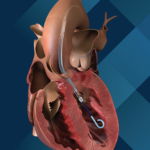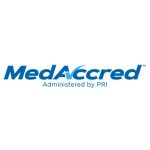In highly regulated industries including medical device manufacturing, pharmaceuticals, and life sciences, regulatory authorities such as the FDA and the European Union (EU) have guidelines related to process validation to confirm a company’s processes will result in reliable outputs and meet all necessary quality standards.
Process validation involves attention to detail and documentation for every step in the process of manufacturing as proof that those steps have been tested and validated to ensure quality outputs. This includes the process of manufacturing the product or device, as well as processes related to software systems such as barcode label design and printing.
What is IQ OQ PQ for Labeling System Validation?
The purpose of process validation for labeling systems is to establish documented evidence that the software is correctly installed, operates according to requirements, and performs safely. It also demonstrates that the manufacturing process, under normal operating conditions, will consistently produce conforming products and outputs.
IQ OQ PQ are sequential activities that manufacturers need to carry out to validate their manufacturing processes. In each phase of the validation process, documents are compiled with detailed results of each qualification test.
- Installation Qualification (IQ) is the first step in the validation process. In this phase, you verify that the manufacturing equipment — in this case your barcode labeling software — meets the design specifications and has been correctly installed and configured according to requirements. IQ will include acceptance testing on items such as admin rights and user management, OS, disk space, license configuration, and more.
- Operational Qualification (OQ) is the second step in the validation process. In this phase, you verify that the labeling software operates according to requirements defined in the IQ phase. You need to carry out tests for each software feature to validate that every part of the labeling system operates as intended at pre-set thresholds.
- Performance Qualification (PQ) is the last step in the validation process. In this phase, you verify performance stability by running the system several times under normal operating conditions to challenge its functionality and quality output. This will demonstrate if the labeling system and process produces outputs that conform to its requirements. Your process performance qualification protocol will feature verification and documentation that all equipment is working within the accepted range under real conditions.
Regulatory Requirements
The medical device, life sciences, and pharmaceutical industries face many labeling regulations that have been established to help protect patients and providers. Each of the regulations below have processes and steps that must be outlined and included with labeling system validation as part of IQ OQ PQ:
- UDI: The FDA requires that all medical devices distributed in the U.S. be labeled with a Unique Device Identifier (UDI), which is comprised of a unique numeric or alphanumeric code that is used to mark and identify medical devices throughout the supply chain.
- FDA 21 CFR Part 11: This regulation applies to the research, manufacturing, and distribution of medical products and was established to protect public health and ensure accuracy of electronic medical records. It also enables organizations to reduce costs by using electronic records in lieu of paper. IQ OQ PQ for labeling system validation means having proof of a secure and compliant process by establishing user permissions and applying electronic signatures to labels throughout their entire lifecycle.
- EU MDR: The European Union Medical Device Regulation (EU MDR) is designed to ensure public health and patient safety across Europe and to increase quality and transparency of medical devices in the healthcare supply chain through label design, label approval, and label tracking standardization.
- DSCSA: The Drug Supply Chain Security Act (DSCSA) requires a unique product identifier at the prescription drug package level.
Features and processes within the labeling system must be defined, tested, and have a “pass” status to validate compliance with these requirements.
When to Perform Labeling System IQ OQ PQ Testing and Validation
Manufacturers in regulated industries are typically required to validate their systems every three years. There are also a variety of events that may occur that require validation documentation to be updated and/or inspected. Some examples of “events” that may trigger the need to perform IQ OQ PQ testing and validation include:
- New implementations of software or hardware.
- New products (and/or product lines) being introduced into the manufacturing process.
- When upgrading software or hardware, new versions may have new features or processes that require updated documentation.
- New locations being added.
- Acquisitions or mergers where software, processes, and product lines are being merged, altered, or added.
- New regulations or standards that influence what is expected within processes and outputs.
Due to the complexity of software, a small local change may have a significant global system impact. When any change is made to the software, the validation status of the software needs to be re-established and a validation analysis should be conducted not just for validation of the individual change, but also to determine the extent and impact of that change on the entire software system. Based on this analysis, you should then conduct an appropriate level of software regression testing to show that unchanged but vulnerable portions of the system have not been adversely affected.
Validation and proof of quality outputs with safe processes is required to pass an audit and avoid the risk of fines or, worst-case, production shutdowns.
Whether you are a new company performing labeling system validation for the first time, or a long-established manufacturing company that is experiencing changes within your labeling system, there are a few options to work through IQ OQ PQ testing documentation and validation.
Labeling is a core component of global regulatory compliance. Working with your internal team and labeling software providers to perform IQ OQ PQ labeling system validation helps to ensure both compliance and safe operation of your products or devices by providers and patients.







